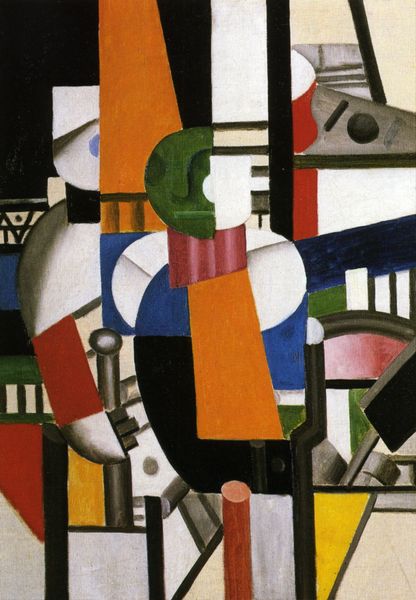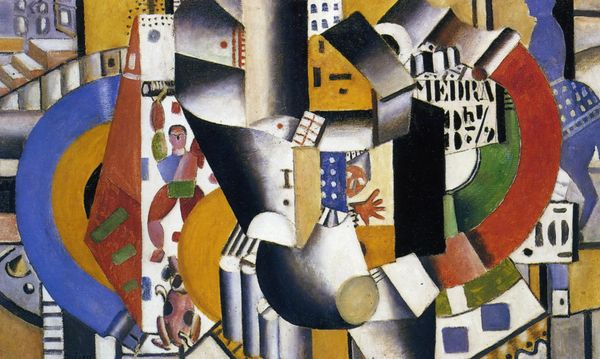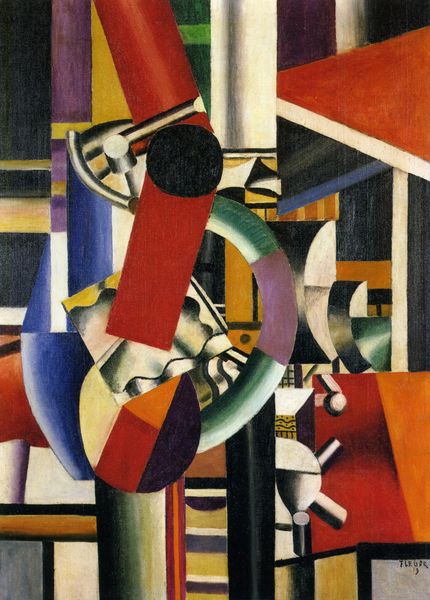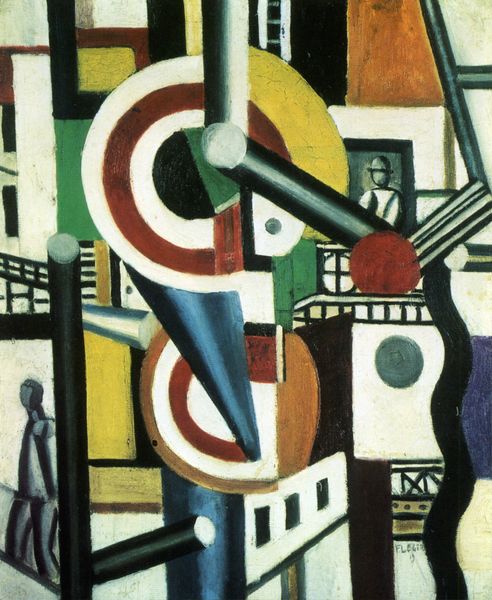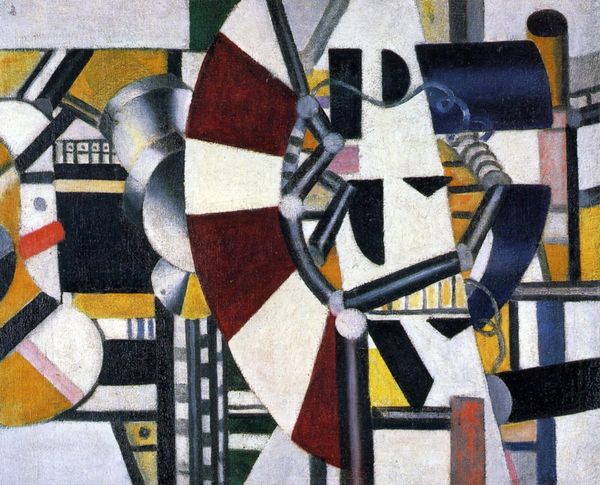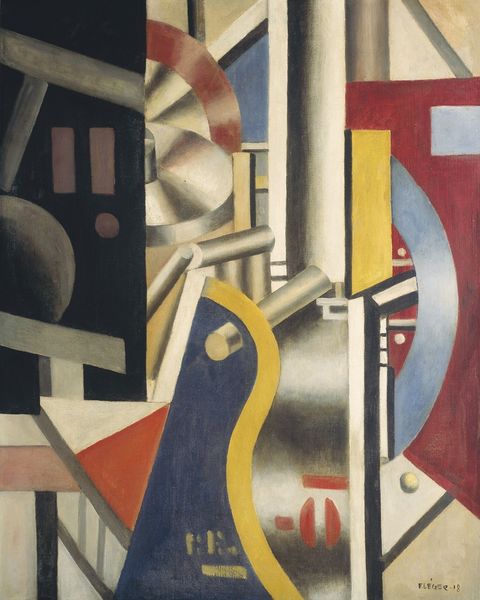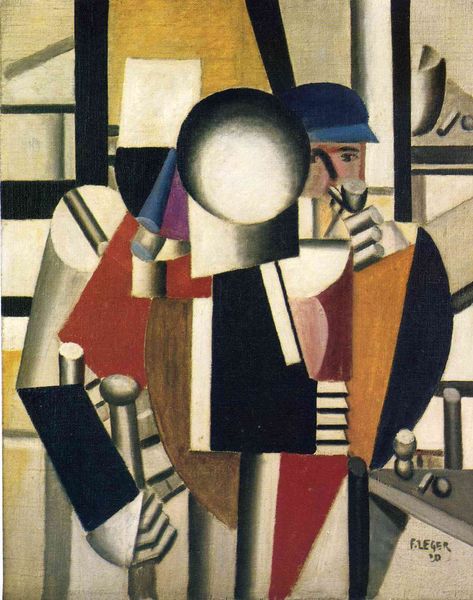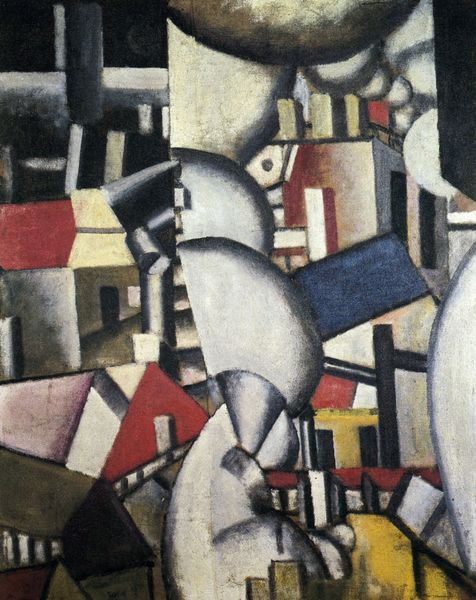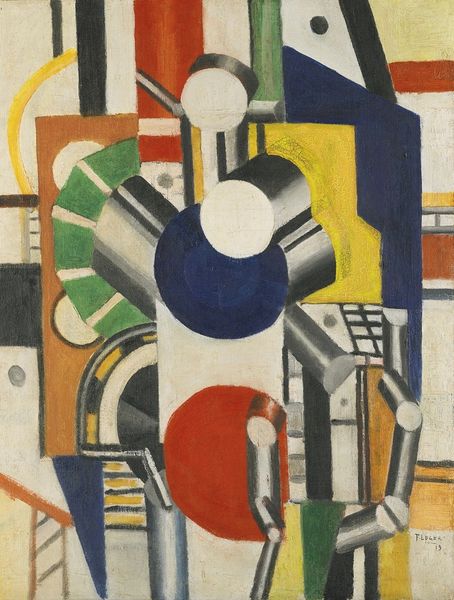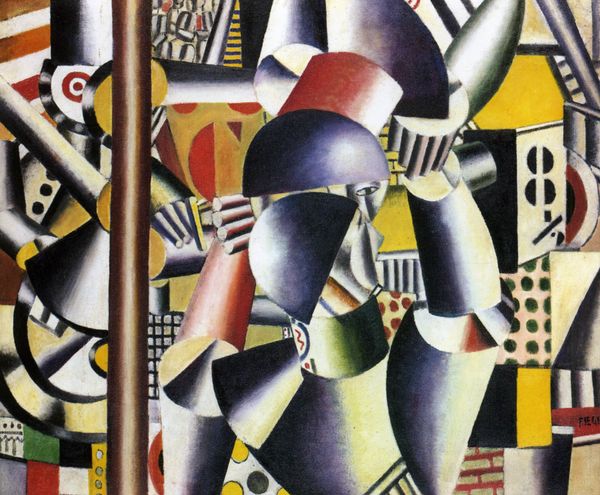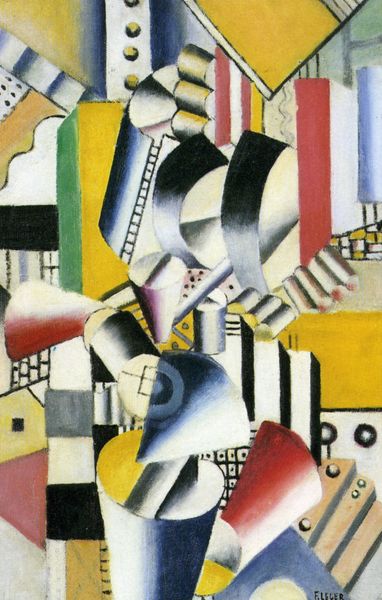
Copyright: Public domain US
Curator: Today, we're examining Fernand Léger's 1919 oil painting, "Men in the City," a dynamic composition currently part of our Modernist collection. Editor: It strikes me as a chaotic yet oddly ordered industrial landscape. There’s a tension between the hard geometric shapes and the slightly softened color palette. Curator: Léger’s work following the First World War was heavily influenced by his time in the military where he worked as a stretcher bearer. His encounter with modern machinery had a lasting impression on him, which he felt reflected the social transformation of society. Editor: Exactly. Look at how he reduces human figures to almost robotic forms—cylinders, cones, simplified planes. He seems less interested in individual personality than in the pure geometry of the human machine. The use of industrial, synthetic materials reflects a functional beauty over that of traditional art. Curator: Precisely. "Men in the City" depicts anonymous, interchangeable figures amidst architectural structures, referencing the increasing uniformity of labor. Mass production transformed art in terms of its social production, content, and dissemination, impacting the rise of labor culture through print media and posters that mobilized labor to fight or increase outputs. Editor: The way Léger balances positive and negative space also guides the eye effectively. Note the contrast of smooth versus textured brushwork. In terms of compositional rigor and exploration, there's a semiotic relationship between surface appearance and conceptual complexity. Curator: Indeed. This semiotic approach mirrors the broader societal changes where material standardization defined interactions of life. Editor: Fascinating. Léger clearly isn't just depicting a city; he is representing its profound socio-economic and cultural effects through this modernist visual language. Curator: Yes, exploring these industrial transformations and how it manifested socially is an interesting area in his practice. Editor: I'm left contemplating how profoundly early industrial processes affected perceptions and representations of urban space. Curator: And I find myself thinking of the relationship between Léger's practice and how his work speaks to these larger issues concerning labor and production.
Comments
No comments
Be the first to comment and join the conversation on the ultimate creative platform.

